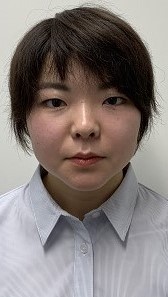Graph Theory-Based Radiomics Features: Application of Tumor Network Structures On CT-Based Radiomics for Prognostic Prediction
M Umeda*, N Kadoya, S Tanaka, S Tanabe, Y Sugai, T Ishida, H Ohashi, S Dobashi, K Takeda, K Jingu, Tohoku University, Sendai, JP
Presentations
MO-IePD-TRACK 4-2 (Monday, 7/26/2021) 3:00 PM - 3:30 PM [Eastern Time (GMT-4)]
Purpose: We developed graph theory-based features and tested their feasibility for predicting prognosis in non-small cell lung cancer (NSCLC) using computed tomography (CT)-based radiomics.
Methods: We used CT images and gross tumor volume contours of 304 patients treated with radiotherapy for NSCLC at our hospital. Patients were divided into training (n = 213) and test (n = 91) datasets. Graphs were constructed with pixels as vertices and the difference in CT values between pixels as weights given to the edges. Thresholds were set for the weights, and edges lower than each threshold were removed. Several graphs were constructed with different thresholds, and features based on graph theory concepts, such as 1 vertex feature, 51 edge features, 20 degree features, 40 minimum spanning tree features, and 40 Laplacian matrix features, were extracted. Next, we developed graph theory histogram-based features for each of these features with 45 gradients and 15 y-axis intercepts of approximate curve features, 1 peak feature, 1 kurtosis feature, and 1 skewness feature. Then, we extracted 215 graph theory-based features. Univariate cox regression analysis was used to assess each feature’s prognostic power and the C-index was calculated to evaluate predictive performance. The least absolute shrinkage and selection operator cox regression model and the Kaplan–Meier method were used to assess the performance of the prognostic prediction, and results were evaluated by comparing C-index of 107 standard features (14 shape features, 18 statistical features, and 75 texture features).
Results: C-indexes for graph theory-based features in the training and test datasets were 0.624 and 0.667, respectively, whereas those for standard features were 0.642 and 0.625, respectively, showing that, in test dataset, graph theory-based features had higher C-index than standard features.
Conclusion: Graph theory-based features may be useful for improving the performance of radiomics-based prognostic prediction.
Funding Support, Disclosures, and Conflict of Interest: This study was partially supported by the Japan Society for the Promotion of Science Grant-in-Aid for Scientific Research (C) (19K08116).
ePosters
Keywords
Image Analysis, CT, Radiation Therapy
Taxonomy
IM/TH- Image Analysis (Single Modality or Multi-Modality): Imaging biomarkers and radiomics
Contact Email



